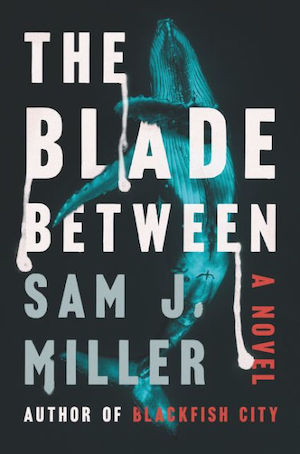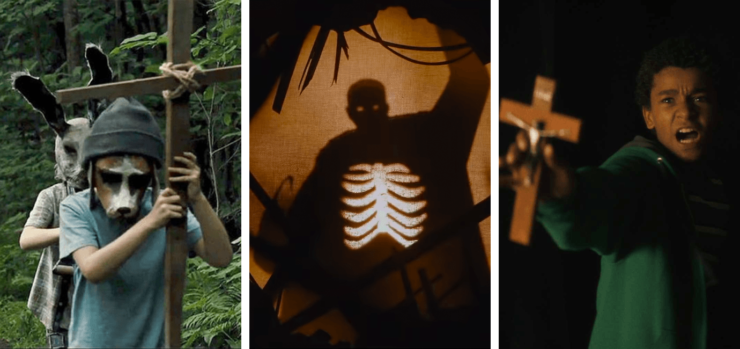This might be the year that gentrification comes out of the closet.
Displacement caused by neighborhood transformation is one of those topics people find tough to talk about, especially when they’re directly impacted by it—or implicated in it.
There are strong feelings on both sides. For long-term residents who are being displaced, there’s often rage (at rising rents, being hassled by landlords and cops, seeing loved ones forced out of their homes)… and grief, at watching helplessly as something they love is slowly destroyed.
And on the other side of the coin, for newer arrivals there’s guilt, and shame, and confusion, and resentment (I didn’t do anything wrong, I don’t know why I am hated). And helplessness—I hate that I am a part of a racist cycle of oppression, but I don’t know what I can do about it.
When we can’t engage in dialogue about a problem, we can’t find real solutions.
I spent fifteen years as a community organizer in NYC, fighting to force the city to adopt housing policies that create housing for homeless folks as well as stop the mass displacement that is the #1 cause of mass homelessness. Again and again, in meetings with stakeholders from all sides, when we asked them to take action to stop displacement, people would shrug their shoulders and say “It’s such a complicated issue.”
By which they meant, “I have no interest in exploring this topic further, and I certainly don’t want to hear about any action I might have to take.”
So, yeah. It’s a conversation that we haven’t been super good at having, up to now.
But one of the things I love best about genre fiction is the way it allows us to explore topics that are too fraught and difficult to have rational discussions about. That’s why in the dark years following 9/11, Battlestar Galactica was the only space in public discourse where Americans could confront the possibility that in responding to a monstrous attack we risked turning into monsters ourselves, and why a work like Kai Ashante Wilson’s “The Devil in America” gives us a fresh perspective on the legacy of American racism.
And I would argue that gentrification and displacement are at the root of some of the most familiar American horror story tropes. Think: haunted houses, blighted buildings, cursed regions, vengeful monsters rooted to one place.
The Shining. Pet Sematary. The Amityville Horror. Blair Witch. Sleepy Hollow. Dark Water. Straw Dogs. The Others. The Nun. The Texas Chainsaw Massacre. Winchester, Pan’s Labyrinth, Poltergeist. Again and again, we see “innocent” people entering a space where great violence has taken place, and being targeted by monsters created by that violence.
The ghosts, the monsters, the bad guys—they’re the murdered, the massacred, the dispossessed, the dishonored. Revenge-crazed ghosts, brutal townies, ancient chthonic demons, spirits loosed from (problematic) “Indian burial grounds.”
Let’s take Pet Sematary as an example. The story takes place in Maine, on the ancestral land of the Mi’kmaq Nation. Their territory was the first portion of North America that Europeans exploited at length for resource extraction, and while they fought six wars over 75 years to retain control of their land, they were ultimately displaced by the relentless onslaught of European invasion. When the Creed family moves in, they have no interest in learning the region’s violent history—a history that has come to horrific life in the form of a burial ground on their property, abandoned by the Mi’kmaq after the soil turned ‘sour,’ since anything buried there would return to life as a malevolent monster.
And while the protagonists of Pet Sematary might not have actually done anything wrong, the violence that they benefit from is still a force to be reckoned with—and their lives are destroyed as a result.
Whether or not Stephen King meant the story as a parable of the cyclical nature of violence as it pertains to indigenous displacement, the subtext is there. And however indirect the approach might be, stories like this are one of our culture’s few attempts to engage with the legacy of displacement and genocide that created the white supremacist world.
Lately, however, that oblique engagement has become more direct. According to CrimeReads, “2020 brought a plethora of new additions to the gentrification noir canon,” and that could also apply to lots of genres.
In N. K. Jemisin’s masterful The City We Became (2020), gentrification is given shape and form as a demonic eldritch abomination straight out of H.P. Lovecraft’s white supremacy wet dreams—a toxic transdimensional incursion bent on buying and selling New York City into non-existence.
The metaphor works because that’s how real estate functions. It undergirds everything, a metastatic infection that will swallow up every spare inch of space and turn it into a commodity if people don’t fight like hell.
In Netflix’s new film Vampires vs. the Bronx (2020), literal bloodsuckers stand in for the developers who are IRL demolishing every inch of affordable housing in the borough that they can. It’s an apt analogy, even if (regrettably) staking slumlords is still illegal.
Both Vampires vs. the Bronx and The City We Became center community as the solution to displacement; directly-impacted people coming together to counteract the monstrous power of their enemies. This too is a profound metaphor: when we look at real-life real estate struggles, people power is the only antidote to the (supernatural) power of capital.
And in the forthcoming remake of 1993’s Candyman, the monster’s milieu has shifted from the poverty and despair of public housing to the rage and frustration of neighborhood transformation.
“Gentrification is what helped us to reimagine this story, because Cabrini-Green is gone,” director Nia DaCosta has said. “There’s a lot of development in that neighborhood because Cabrini-Green has been torn down. What we wanted to talk about was the ghosts that are left behind.”
To learn more about the relevance of gentrification to genre fiction, I spoke with one of my favorite YA authors, Lilliam Rivera.
“It’s ultimately a question about power and class,” she says. “Whether I’m writing a coming-of-age contemporary story (The Education of Margot Sanchez) or a dystopian novel (Dealing In Dreams), most of my fiction always gravitates towards a discussion on gentrification. I’m fascinated by the ideas behind what is considered affordable housing, and who is allowed to make urban planning decisions.”
“I’m unable to write about a castle as just a castle and not a symbol of ridiculous wealth and how it impacts my characters,” she continues. “A building is not just a building. There is a long history behind it, fingerprints embedded in the walls.”
My own writing isn’t separate from my community organizing work. Much of my fiction is about taking a problem no one wants to confront, and dressing it up in the strange new clothes of speculative fiction so people can see the problem without the hurt and pain of their own direct connection to that issue.
Nobody in New York City wanted to talk about landlords keeping buildings empty while people died in the streets—but when I set that same problem in a post-climate-change floating Arctic city in my novel Blackfish City, suddenly lots of people agreed that it should be illegal.
And throughout those long years of organizing to stop the displacement of long-term residents from Harlem and Bed-Stuy, my own hometown of Hudson, New York, was undergoing the same dynamic.
“High-end antique shops and New Yorkers with second homes have rapidly gentrified Hudson over the last decade,” said the New York Times in 2004, and in 2009 they quoted 25-year-old local Jamont McClendon: “Everything’s closing or being downsized. It’s a great town in some ways, but I’m pretty disgusted. There’s no living here unless you’re rich.”
Buy the Book


The Blade Between
Hudson’s transformation filled me with rage and sadness. Which is weird because I’d run screaming from the city as soon as I possibly could—fleeing small-town small-mindedness and homophobic bullying and a total lack of career options or cultural opportunities. And for years I struggled with how to spin that pain into a story. For years I told myself it wasn’t my town anymore. It wasn’t my story to tell.
But in 2017 I realized: my in-between-ness actually gave me a privileged insight. I was an outsider and I was a native son. An NYC hipster and an angry townie. I straddled both sides, so I could see it objectively. I knew what made Hudson wonderful, and what made it terrible.
My gentrification horror novel The Blade Between was my attempt to exorcise the rage I felt. The hate. The anger at people who blithely traipse through the haunted uncanny streets and don’t see the ghosts, don’t know the stories. Who aren’t part of the fabric. Who live in the homes my friends were forced out of.
“Gentrification walks alongside with colonization,” says Lilliam Rivera. “As a Puerto Rican, I am a product of a colonized island. If I write a novel about space aliens, then I have to write about colonization, about gentrification, about experiments being done to Brown and Black people. A ghost story must be informed by history and history has shown how these violent concepts are not simply theories but actual tools to suppress people and strip resources.”
Horror stories usually end in annihilation for either the protagonists or the monsters. Or both. But I believe it’s possible—it’s essential—that the story of displacement can end in a place of reconciliation and justice. For that to happen, though, the displacers have to recognize their shared destiny with the displaced, and take active steps to build an equitable future for all.
Ghost stories can point the way. There’s The Babadook, which ends with the heroine realizing she can’t exorcise the demon spawned by her grief—she must make peace with it. Honor it. Understand that it’s a part of her. And there’s Beetlejuice, which ends with the clueless rich gentrifiers recognizing that they are fundamentally the same as the (dead) people they displaced, and learning to co-exist in harmony.
I don’t want to get too spoiler-y about The Blade Between, but I will say that as a community organizer—and as a storyteller—my prime directive was crafting an ending that raised up the possibility of a third path forward being forged, through dialogue and hard work on both sides.
In the modern-day housing market, there are no ghosts. No monsters. Only people. And if we want the future to look less like the horror story of hate and violence that is our history, we all have to make peace with trauma, and our role in it, and the privilege and pain we possess in relationship to it. And our power to create change.
Originally published February 2021.
Sam J. Miller is the Nebula-Award-winning author of The Art of Starving (an NPR best of the year) and Blackfish City (a best book of the year for Vulture, Entertainment Weekly, and more). A recipient of the Shirley Jackson Award and a graduate of the Clarion Writers’ Workshop, Sam’s short stories have been nominated for the World Fantasy, Theodore Sturgeon, and Locus Awards, and reprinted in dozens of anthologies. A community organizer by day, he lives in New York City. His latest novel, The Blade Between, is available from Ecco.










